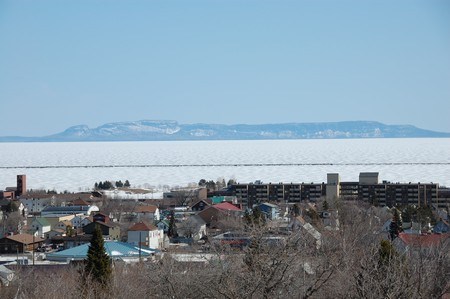THUNDER BAY -- Northern Ontarians are older, have higher jobless rates and are less educated, healthy and compensated than the provincial average, according to the Profile of Wellbeing report released on Tuesday by the Ontario Trillium Foundation.
According to the figures provided in the port, 41 per cent of Northern Ontarians are older than 50, with the median age of 44.1 years. This is nearly six percentage points higher than the rest of the province.
The unemployment rate is 9.4 per cent, compared to 8.5 per cent province-wide, while the after-tax median family income is $65,374, more than $6,000 less than the $71,715 pulled in by the average Ontario family.
Just 54.8 per cent of residents in the region are employed, the lowest of five regions surveyed for the report. But there is a smaller percentage of people living in the low-income category than there is in the rest of the province and far fewer people spend 30 per cent of their before-tax income on housing, 20.2 per cent to 25 per cent.
Only 53 per cent of Northern Ontario residents have their health rates as very good or excellent, 6.2 percentage points less than the provincial norm. When it comes to mental health, Northern Ontario sits at 67.5 per cent rate very good or excellent, slightly lower than the 70.4 per cent Ontario average. Fewer residents living in the North have a regular physician, though 85 per cent fall into the category.
Northern Ontario is also dwarfed by the rest of the province when it comes to its visible minority population, with just 1.9 per cent of residents fitting into the category, compared to 25.5 per cent province-wide.
Not surprisingly, the North does have the highest percentage of households occupied by Indigenous people, at 12.8 per cent.
The news isn’t all bad.
The region sports a much higher-than-average number of people who have knowledge of both of Canada’s official languages, 23.6 per cent with a command of both French and English versus just 10.9 per cent in all of Ontario.
Northern Ontarians also have a stronger sense of community belonging, 72.3 per cent citing they have a somewhat or strong sense, as opposed to 68.1 per cent across the province. This in spite of the fact more residents in the region have fewer than five friends to provide support and 11.8 per cent live alone, 2.2 percentage points more than the provincial average.
This has the potential to contribute to a sense of isolation, the report says.
There’s also considerably more crime in the North, which has a crime severity index of 69.1, compared to the provincial average of 50.
That said, nearly three-quarters of the population reports feeling safe walking in their neighbourhood, a smidge less than the rest of Ontario.
Fewer people in the northern part of the province report having been discriminated against, just 7.7 per cent compared to 9.1 per cent, but the report’s author cautions it could be because of the substantially lower rate of visible minorities in the North.
Regional residents also have less trust in government, with just 33.3 per cent expressing confidence in the work being done in Ottawa, the rest of the province checking in at 39.6 per cent. The North also has a significantly lower percentage of female MPs and MPPs.
When it comes to post-secondary education, only 16.4 per cent of Northern Ontario residents between 25 and 64 have a university degree, whereas province-wide the number is 28.5 per cent.
The region does have a higher-than-average availability of regulated centre-based child care.
Environmentally speaking, ground-level ozone, or smog, is at comparable levels with the rest of the province. The area also has the cleanest water in Ontario, with an average pH level of 7.6
Teen smoking rates are also slightly higher in the North, as is time devoted to the arts. Leisure participation is a little lower, though physical activity lasting 15 minutes or longer is actually higher. . People in the North are also less stressed at work and fewer put in 50 hours or more at the office.
We spend less time commuting to work and spend more time per days with friends.
